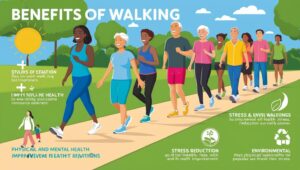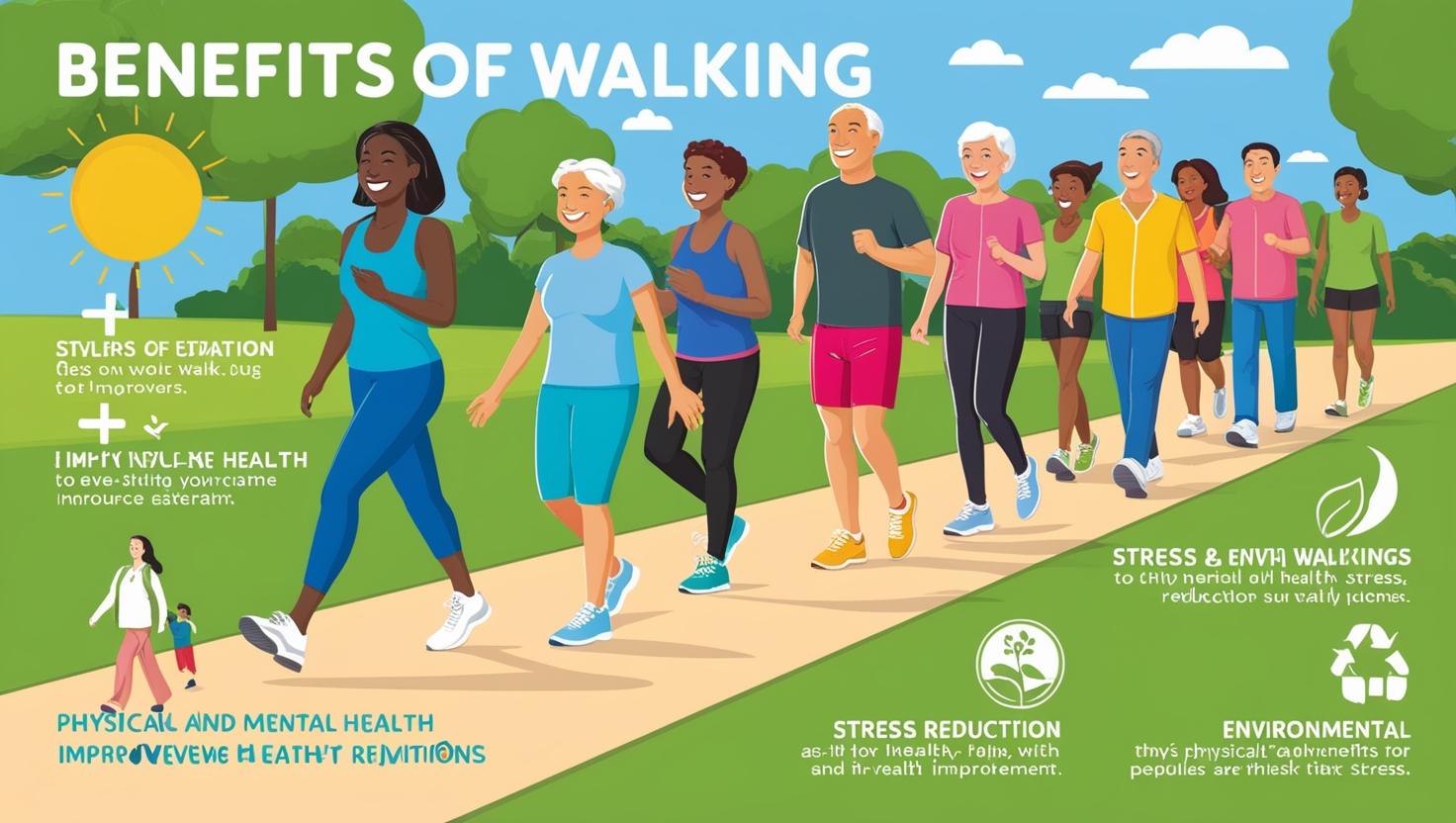Walking is one of the simplest and most accessible forms of exercise, yet it offers a multitude of health benefits that can significantly improve your quality of life. Whether you’re strolling through your neighborhood, hiking up a hill, or taking a post-dinner walk, each step you take contributes to your overall well-being. In this article, we’ll explore the various benefits of walking, including specific advantages of walking on a treadmill, after dinner, barefoot, uphill, and during pregnancy. By understanding these benefits, you can make informed choices to incorporate more walking into your daily routine and enjoy a healthier, more active lifestyle.

Benefits of Walking on a Treadmill
Walking on a treadmill is a convenient way to get your daily steps in, especially when the weather isn’t cooperative or you prefer the comfort of exercising indoors. Here are some key benefits:
- Cardiovascular Health: Regular treadmill walking can improve heart health by increasing aerobic activity, reducing blood pressure, and lowering cholesterol levels.
- Weight Loss: Walking on a treadmill can help you burn calories, with participants in one study losing 8.5 to 11.4 pounds over 10 months by walking 5 days a week.
- Bone Health: It can increase bone mineral density, particularly in the lumbar spine, which is crucial for preventing osteoporosis.
- Lower-Body Strength and Mobility: Treadmill walking, especially with an incline, engages the core, arms, and lower body muscles, improving strength and mobility.
- Mental Health: Exercise, including treadmill walking, has been shown to reduce symptoms of depression and anxiety, enhancing overall mental well-being.
- Brain Power: Walking can boost cognitive function by increasing blood flow to the brain and activating neuroprotective genes.
- Digestion: A brisk walk after a meal can aid digestion and help regulate blood sugar levels.
Benefits of Walking After Dinner
Taking a walk after dinner is a practice that has been shown to offer numerous health benefits:
- Improved Digestion: Walking stimulates the stomach and intestines, helping food move through the digestive system more efficiently.
- Cancer Prevention: Regular walking, especially after meals, may reduce the risk of cancers in the digestive system.
- Blood Sugar Management: It helps prevent spikes in blood sugar levels, which is particularly beneficial for individuals with diabetes.
- Reduced Heart Disease Risk: Walking after meals can lower blood pressure and improve cholesterol levels, reducing the risk of heart disease.
- Weight Loss: It contributes to a calorie deficit, supporting weight management goals.
- Blood Pressure Regulation: Regular post-dinner walks can help regulate blood pressure, especially for those with hypertension.
Benefits of Walking Barefoot
Walking barefoot, also known as grounding or earthing, has gained popularity for its potential health benefits:
- Better Control of Foot Position: It improves foot placement and natural gait.
- Balance and Proprioception: Enhances body awareness and balance.
- Foot Mechanics: Leads to better alignment and movement of the feet, hips, knees, and core.
- Range of Motion: Maintains flexibility and strength in the foot and ankle joints.
- Relief from Improperly Fitting Shoes: Prevents foot deformities caused by ill-fitting footwear.
- Stronger Leg Muscles: Engages and strengthens the muscles in the legs, supporting overall lower body strength.
Benefits of Walking Uphill
Walking uphill or on an incline adds an extra challenge to your workout, offering unique benefits:
- Boosts Heart Rate: Increases cardiovascular effort, leading to better heart health.
- Conditions for Realistic Terrain: Prepares the body for varying outdoor inclines, improving adaptability.
- Prevents Knee Problems: Targets lower body muscles, reducing pressure on the knees and potentially preventing osteoarthritis.
- Activates Lower Leg Muscles: Engages calves, shins, and peroneal muscles more than flat walking.
- Increases Calorie Burning: Burns more calories due to the increased effort required.
- Supports Weight Loss: Helps maintain a caloric deficit, aiding in weight management.
Benefits of Walking During Pregnancy
For pregnant women, walking is a safe and effective form of exercise that can provide numerous benefits:
- Optimal Baby Positioning: Helps the baby achieve the best position in the uterus, especially in the later stages of pregnancy.
- Reduces SI Joint Aches and Pains: Strengthens back muscles, alleviating some pregnancy-related discomforts.
- Improves Mental Health: Boosts energy levels and mood, helping to combat pregnancy-related fatigue and emotional changes.
- Manages Gestational Diabetes: Assists in keeping blood sugar levels stable, reducing the risk of gestational diabetes.
Conclusion
Walking is a versatile and beneficial exercise that can be adapted to various situations and needs. Whether you’re walking on a treadmill, after dinner, barefoot, uphill, or during pregnancy, each form offers unique advantages that contribute to your physical and mental health. By incorporating more walking into your daily routine, you can enjoy improved cardiovascular health, better weight management, stronger muscles, and enhanced mental well-being. Remember to start slowly, listen to your body, and consult with healthcare professionals when necessary to ensure that walking remains a safe and enjoyable part of your lifestyle.
FAQs
1. Is walking on a treadmill as effective as walking outdoors?
Yes, walking on a treadmill can be just as effective as walking outdoors, especially if you adjust the incline to simulate outdoor terrain. It provides a controlled environment where you can easily monitor your pace and distance.
2. How long should I walk after dinner to see benefits?
Even a short walk of 10-15 minutes after dinner can provide benefits such as improved digestion and blood sugar management. However, longer walks can offer even greater advantages.
3. Is it safe to walk barefoot everywhere?
While walking barefoot has benefits, it’s important to do so on safe, clean surfaces to avoid injury or infection. It’s best to start indoors or on natural surfaces like grass or sand.
4. Can walking uphill help with weight loss?
Yes, walking uphill increases the intensity of your workout, leading to higher calorie burn and supporting weight loss efforts when combined with a healthy diet.
5. Is walking safe during all stages of pregnancy?
Walking is generally safe during pregnancy, but it’s crucial to consult with your healthcare provider, especially if you have any complications or concerns. Start slowly and pay attention to how your body feels.
